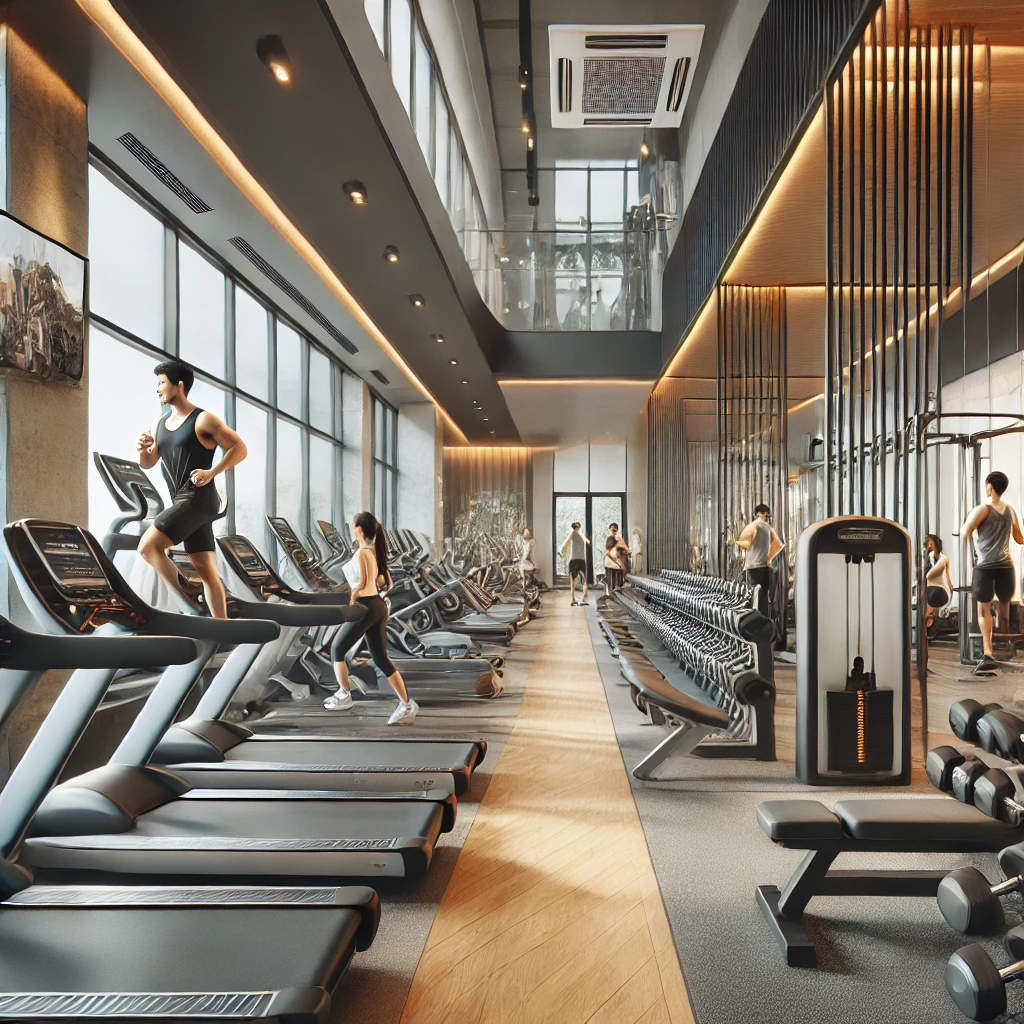Joining a gym is an exciting step toward a healthier and fitter lifestyle. However, before you get started, there are a few important things you should know to make your gym experience smooth and effective. This guide will help beginners understand what to expect, how to prepare, and how to maximize their time at the gym.
Table of Contents
1. Define Your Fitness Goals
Before you start, determine why you want to join a gym. Are you looking to lose weight, build muscle, improve endurance, or stay active? Having clear goals will help you choose the right workout plan and stay motivated.
If your goal is weight loss, focus on a mix of cardio and strength training. If muscle gain is your priority, incorporate resistance exercises with progressive overload. Endurance seekers should prioritize cardiovascular exercises. Identifying your objective helps in creating an effective routine and tracking progress efficiently.

2. Choose the Right Gym
Not all gyms are the same. Consider these factors when selecting a gym:
- Location and Accessibility: A gym close to your home or workplace will help you stay consistent.
- Equipment and Facilities: Ensure the gym has all necessary machines, free weights, and space for functional training.
- Trainers and Staff Expertise: Certified trainers can guide you effectively, especially as a beginner.
- Cleanliness and Hygiene: Check the gym’s sanitation practices to maintain hygiene.
- Membership Costs and Flexibility: Compare pricing, contract duration, and additional fees.
- Group Classes and Additional Services: Many gyms offer yoga, spinning, and HIIT sessions that can add variety to your workouts.
Visit a few gyms, take a trial session if possible, and choose one that best suits your needs.
3. Understand Gym Etiquette
Following proper gym etiquette ensures a comfortable environment for everyone. Here are some key rules:
- Wipe down equipment after use to maintain hygiene.
- Avoid hogging machines during peak hours; allow others to work in between sets.
- Return weights and equipment to their designated places to keep the gym organized.
- Respect others’ personal space and avoid unnecessary interactions during their workouts.
- Keep noise levels in check, including using headphones for music instead of loudspeakers.

4. Start with a Basic Workout Plan
As a beginner, don’t jump into heavy workouts immediately. Start with simple exercises and gradually increase intensity. A structured plan includes:
- Warm-up: 5-10 minutes of light cardio (walking, jogging, or cycling) and dynamic stretching.
- Strength Training: Focus on bodyweight exercises like squats, push-ups, lunges, and light dumbbell movements.
- Cardio: Engage in treadmill running, cycling, or rowing for 20-30 minutes to build endurance.
- Cool-down: Finish with static stretching to relax muscles and prevent injury.
Consult a trainer to create a customized workout plan based on your fitness level and goals.
5. Learn Proper Form and Technique
Using the right technique is essential to prevent injuries and get the best results. If you’re unsure how to use a machine or perform an exercise, ask a trainer for help or watch instructional videos from certified professionals. Poor form can lead to long-term injuries and hinder progress, so always prioritize proper movement over lifting heavy weights.
6. Nutrition and Hydration Matter
Exercise alone won’t get you results if you don’t follow a balanced diet. Focus on:
- Eating protein-rich foods like chicken, fish, eggs, tofu, and legumes for muscle recovery.
- Including healthy carbs such as whole grains, fruits, and vegetables for sustained energy.
- Consuming healthy fats from nuts, seeds, and olive oil for overall well-being.
- Staying hydrated before, during, and after workouts to maintain performance and prevent dehydration.
- Avoiding processed and sugary foods that hinder progress by causing energy crashes and unwanted fat gain.

7. Don’t Overdo It
Many beginners push themselves too hard in the first few weeks, leading to burnout or injury. Start slow, listen to your body, and allow time for recovery. Aim for 3-4 workout sessions per week initially and increase as you progress. Rest days are crucial for muscle repair and overall growth.
8. Invest in Proper Gym Gear
Wearing the right workout gear enhances comfort and performance. Essentials include:
- Comfortable, moisture-wicking workout clothes to stay dry and comfortable.
- Supportive shoes designed for specific activities like running, weightlifting, or cross-training.
- A gym towel and water bottle to maintain hygiene and hydration.
- Personal hygiene items like deodorant, sanitizer, and wet wipes for post-workout freshness.
9. Stay Consistent and Patient
Results take time, so don’t get discouraged if you don’t see immediate changes. Stay consistent with your workouts, follow a healthy diet, and track your progress to stay motivated. Taking progress pictures, maintaining a workout journal, or using fitness apps can help you measure improvements over time.
10. Seek Professional Guidance
If you’re serious about your fitness journey, consider hiring a personal trainer. They can:
- Guide you with personalized workout plans based on your body type and goals.
- Correct your form and technique to prevent injuries.
- Provide motivation and accountability to keep you on track.
- Help you adjust your routine as you progress for continuous improvement.
Conclusion
Joining a gym is a fantastic decision for your health and well-being. By understanding these key aspects before starting, you can make the most of your gym experience while avoiding common mistakes. Stay patient, enjoy the process, and celebrate small achievements along the way!
Are you ready to start your fitness journey? Find the right gym, stay committed, and take the first step toward a healthier you 🏋️♂️ Transform your fitness journey with Corfit Gym – Where Strength Meets Dedication! 💪🔥 #CorfitStrong!

